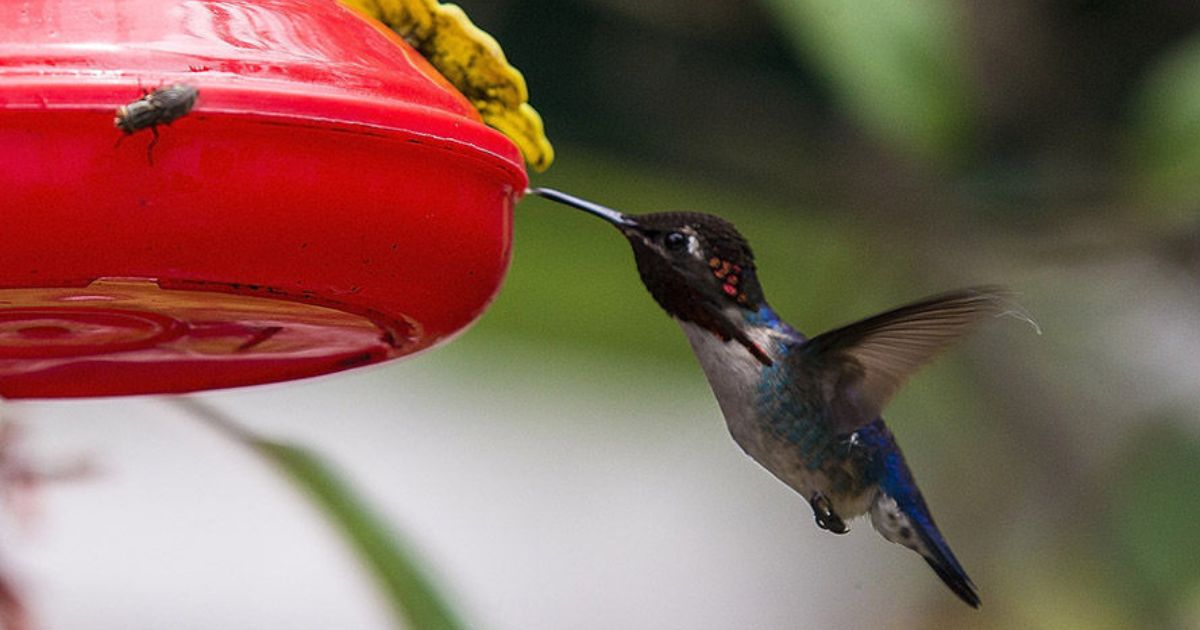
In the town of Pálpite, located on the edge of the wetland known as Ciénaga de Zapata in Matanzas, a couple transformed their home into a sanctuary for the bee hummingbird, also known as the zunzuncito, the smallest bird in the world, twenty years ago.
The garden of Bernabé Hernández and Juana Matos has become a refuge for this tiny bird, which finds a paradise in the shade of mango, guava, and avocado trees, reported the news portal Swissinfo.
In that paradise, half a dozen of these hummingbirds flit about at high speed in front of some tourists, who hurry to take their pictures.
While watching two specimens dive for a small suspended water trough, Hernández, a septuagenarian man from the countryside, expressed that they never get tired: "There's always something new to discover."
The bee hummingbird (Mellisuga helenae), endemic to Cuba and recognized as the smallest bird in the world, measures between 5 and 6 centimeters and weighs between 1.6 and 2.5 grams. In Cuba, it is called "zunzuncito," a diminutive form of zunzún, a name that comes from the buzzing of its wings, which can reach up to 100 beats per second while flying or hovering to feed on flowers.
The story of this garden, named "The House of Hummingbirds," began two decades ago. At that time, they had no intention of turning their home into an observatory.
After Cyclone Michelle destroyed his home, located in a remote area of the Ciénaga de Zapata, the largest wetland in the Caribbean, the regime allocated him a plot of land and materials to build a new house, this time in the village of Pálpite.
At first, there were no birds, Hernández noted. Unaware that it would be very appealing to the zunzunes, he decided to plant a ponasí "to provide shade for the house."
He soon noticed that several birds began to arrive. The wild shrub Hamelia patens is renowned for its ability to captivate birds with its fruit.
This gentleman was also unaware that this plant is one of the favorites of the zunzuncito, also known in Cuba as the hummingbird or bee bird.
Attracted by the sugary juice, the first sweet-toothed visitors soon appeared, as they are captivated by the nectar of the vermilion flowers of the ponasí.
Hernández recalls, “When I first saw a zunzuncito, I thought it was an insect.” From that moment on, he decided to plant more ponasí bushes, known for blooming year-round.
Over time, these plants began to attract the hummingbirds that nest in the forest adjacent to the house.
The next step in building this sanctuary was to learn how to prepare the precise mixture of water and sugar to pour into the feeders, as well as to clean them to prevent mold. This knowledge came from the guides of the Ciénaga de Zapata Natural Park.
For Hernández, it is impossible to know how many hummingbirds visit his garden each day, as their energetic movement makes it difficult to count them. However, he states that he sees them throughout the year, which brings him great joy, since they are the smallest birds in the world.
In addition to the zunzuncito, Hernández's garden is frequently visited by another species of hummingbird that is slightly larger (10 cm) and more common, known as the Ricord's emerald (Riccordia ricordii).
According to Swissinfo, the sanctuary created by this Cuban couple in the Zapata Swamp helps the Mellisuga helenae, a species classified as "near threatened" by the International Union for Conservation of Nature (IUCN). The population of this bird in Cuba is estimated to be between 22,000 and 66,000 individuals.
When one of these small birds chooses to nest in a highly visible spot for humans, it is always a source of joy to observe the miracle of its existence.
Years ago, guests and staff at the Meliá Península Varadero Hotel experienced that excitement when, for the second consecutive year, a hummingbird took over the lobby to build its nest.
On that occasion, the bird built its nest in a shrub within the area to protect its offspring.
Filed under: